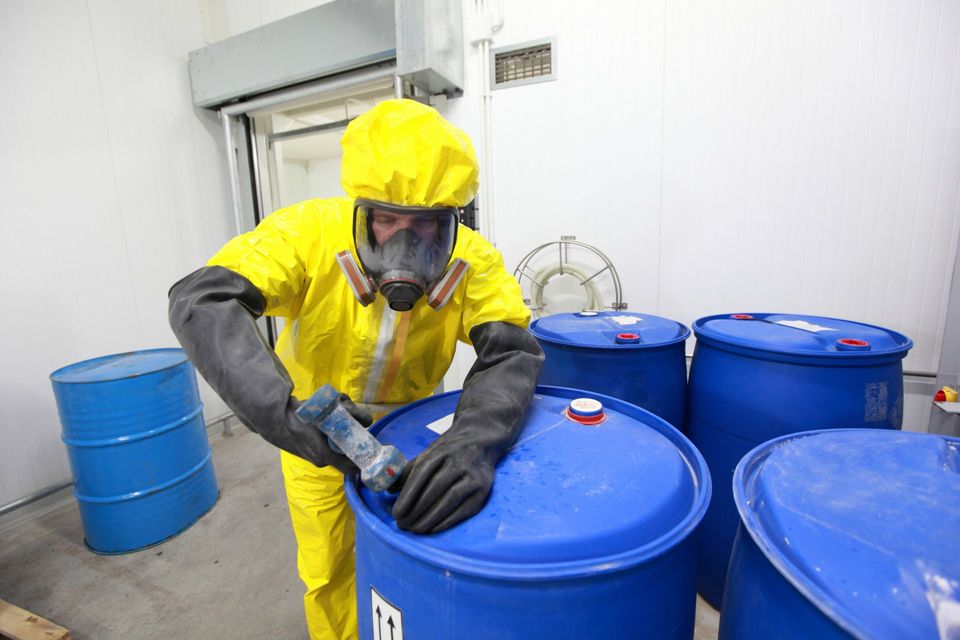WHAT YOU MAY NOT KNOW ABOUT CHEMICALS IN YOUR FACILITY: HAZARDOUS MATERIALS MANAGEMENT MIGHT BE REQUIRED

Chemicals and hazardous waste materials are common in many work places. Laboratories, schools, warehouses, factories, medical facilities, and many other establishments have chemicals present, and the containers used to store them are standardized by various regulatory agencies. Often, the containers and materials inside of them can become contaminated, out-of-date, damaged, or unneeded, and must be disposed of following the procedures set forth by the government.
Disposal of hazardous waste and lab decommissioning is regulated by many government agencies and must be completed by a certified specialist familiar with proper federally mandated policies. The SEA Safety Management Systems personnel are HAZWOPER and HAZMAT certified in hazardous materials management and know the laws related to safely,
and efficiently disposing of all hazardous chemicals. In fact, the Little Rock training facility teaches courses to help businesses meet OSHA, EPA, and other government regulatory standards.
Chemicals
Even if your business is not a laboratory full of obvious chemicals, over time your facility may end up with as many small containers (usually less than 10 gallons each) that contained chemicals or hazardous materials as those in a lab setting. Depending on your business or facility, there may be a wide variety of hazardous chemicals that require disposal including: paint, thinners, strippers, cleaners, acids, bases, solvents, and compounds for dry cleaning or pool cleaning.
In public school chemistry labs, commonly used chemicals such as picric acid become explosive as they age, and can cause an explosion just from the friction of opening the lid. Fire hazards are a problem for stored solvents such as Acetone, Methyl Ethyl Ketone, Xylene, Ether and Toluene which are extremely flammable. A certified hazardous materials management team, like SEA’s, is required to properly categorize, pack, transport, and dispose of these chemicals within EPA, OSHA, and DOT regulatory guidelines.
Hazards
You might not be aware of the very common chemicals that are categorized as hazardous wastes after they have been used. Cleaning solutions, aerosol cans of paint, and degreasers might fall within the government’s “hazardous waste” category and require proper disposal, which can be executed by a certified hazardous materials management team.
With an our on-staff chemist, the professionals at SEA Safety Management Systems understand how compounds and chemicals behave. For the benefit of everyone’s health and safety, our specialists have successfully completed over 3,500 lab-packing projects for general industry, construction, and government agencies.
Contact us
SEA Safety Management Systems recently acquired SEA, Inc. to expand and enhance their environmental regulatory training services. The health and safety training programs, hazardous materials management, and environmental services provided by SEA, Inc. and SEA Safety Management Systems help you in safety compliance, productivity, and overall cost savings. Contact us online today or call us toll free at 888-627-8740 for more information on any of our business-essential services.

f you think PFAS regulation is someone else’s problem, think again. The regulatory environment around per- and polyfluoroalkyl substances is shifting rapidly, and safety, environmental, and operations teams are squarely in the crosshairs. Rather than scrambling when the deadlines arrive, your best strategy is to act early.

Halloween might be the season for ghost stories and haunted houses, but for safety and environmental professionals, the real nightmares happen at work. From unseen hazards to data disasters, these frights are all too real. At SEA, we help EHS managers conquer their fears — and their risks — with smart, proactive solutions that turn horror stories into success stories.

Every year, OSHA releases its list of the most frequently cited workplace safety standards. While the names change little from year to year, the numbers tell a story: employers continue to struggle with the same hazards—falls, hazardous chemicals, and machine safety. Understanding these violations is the first step in preventing costly citations and protecting workers.
